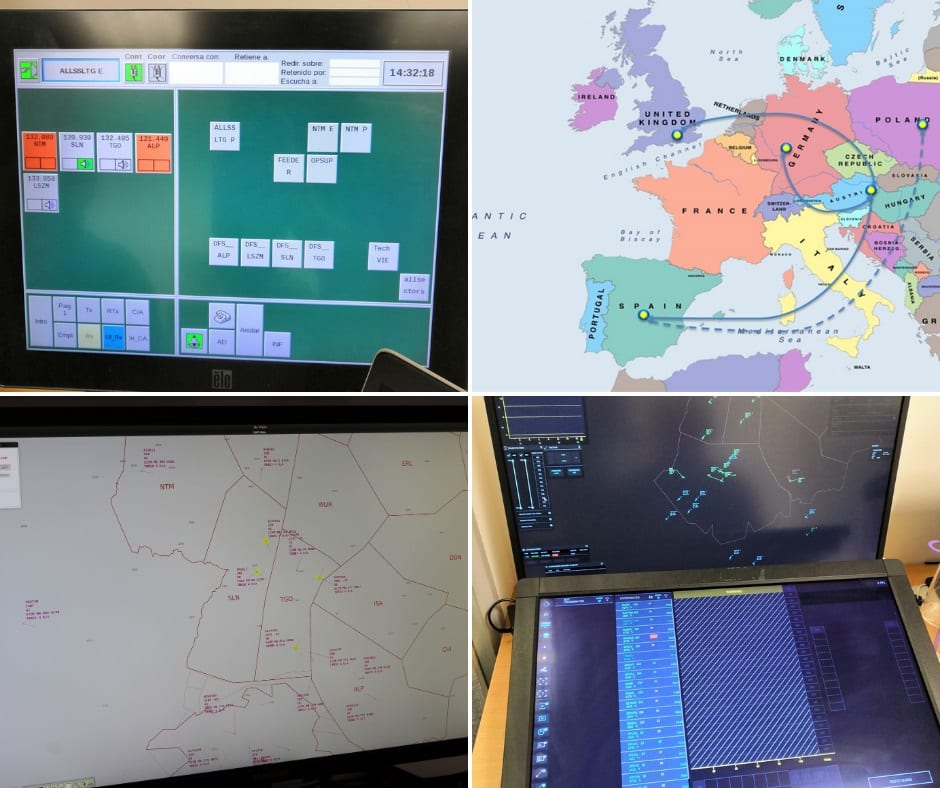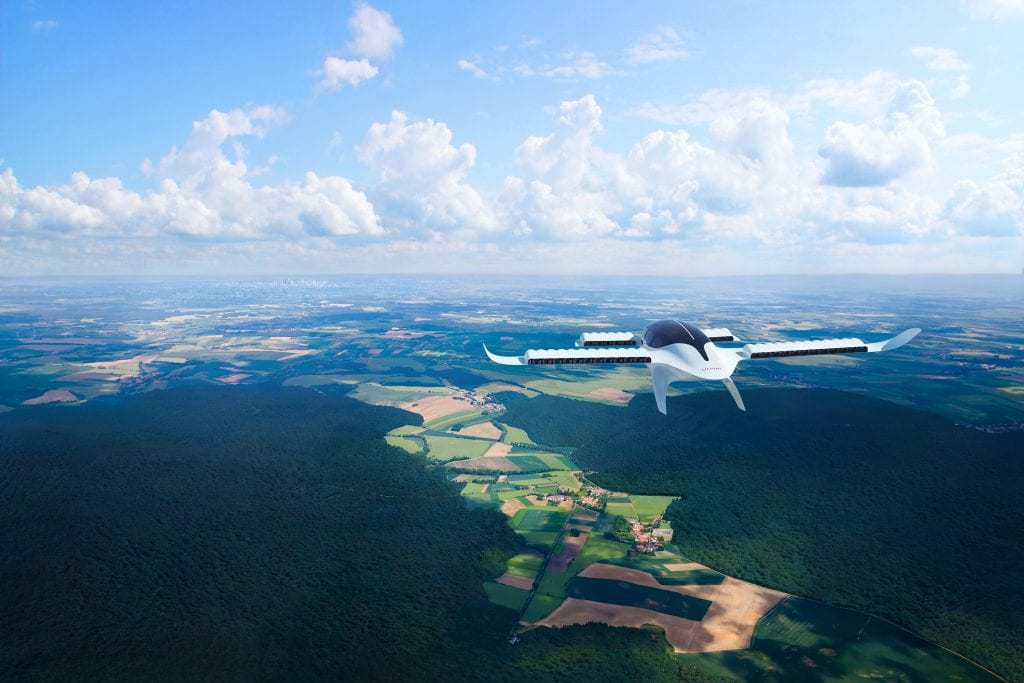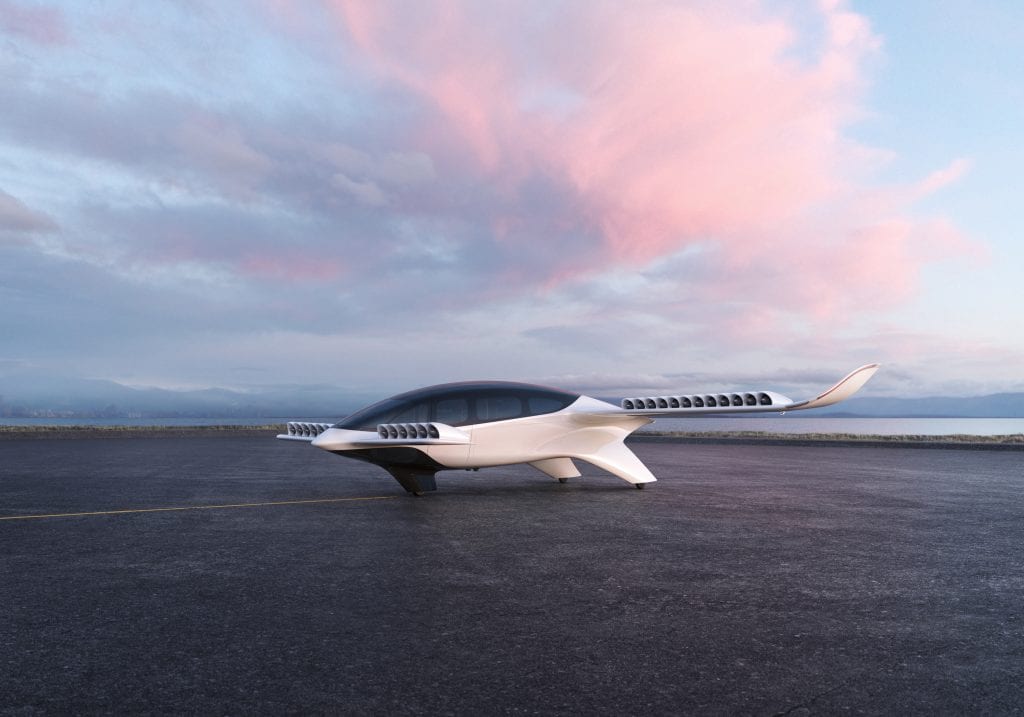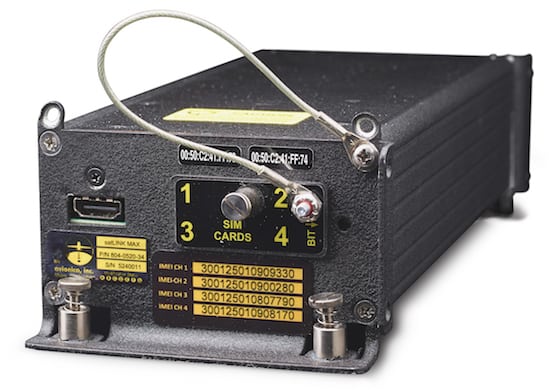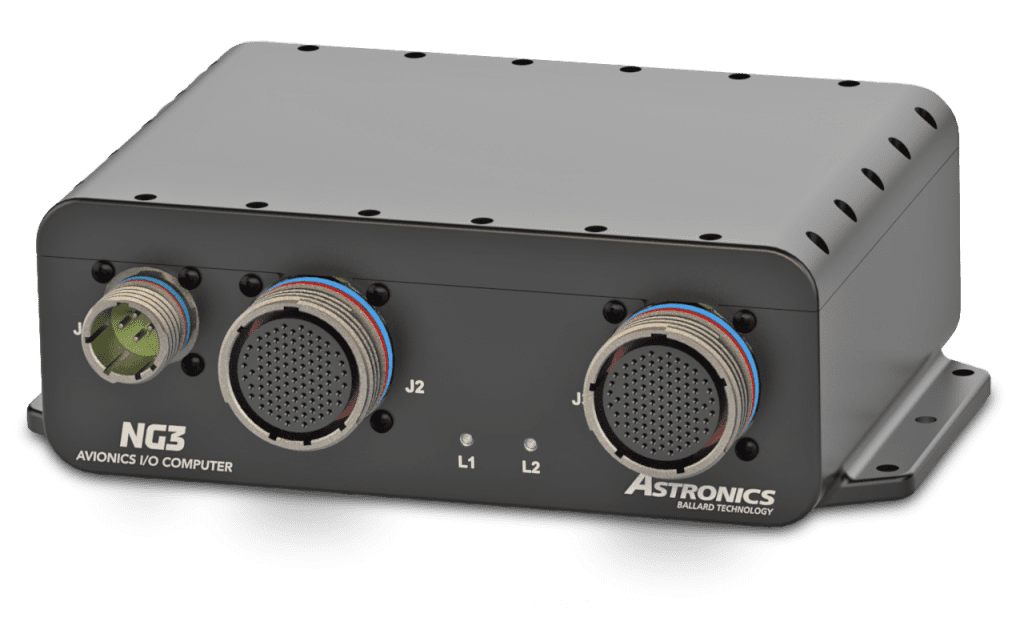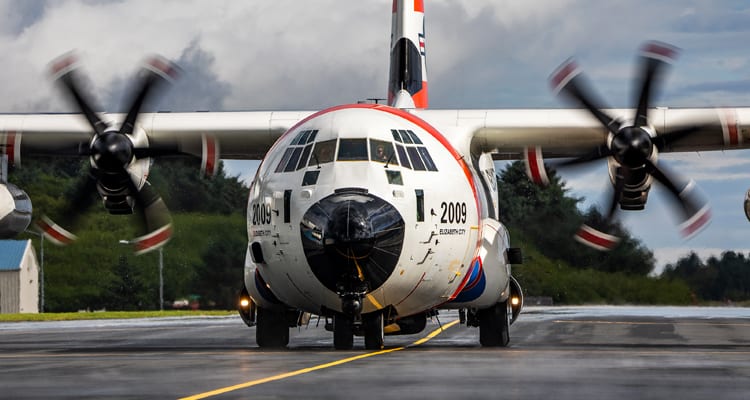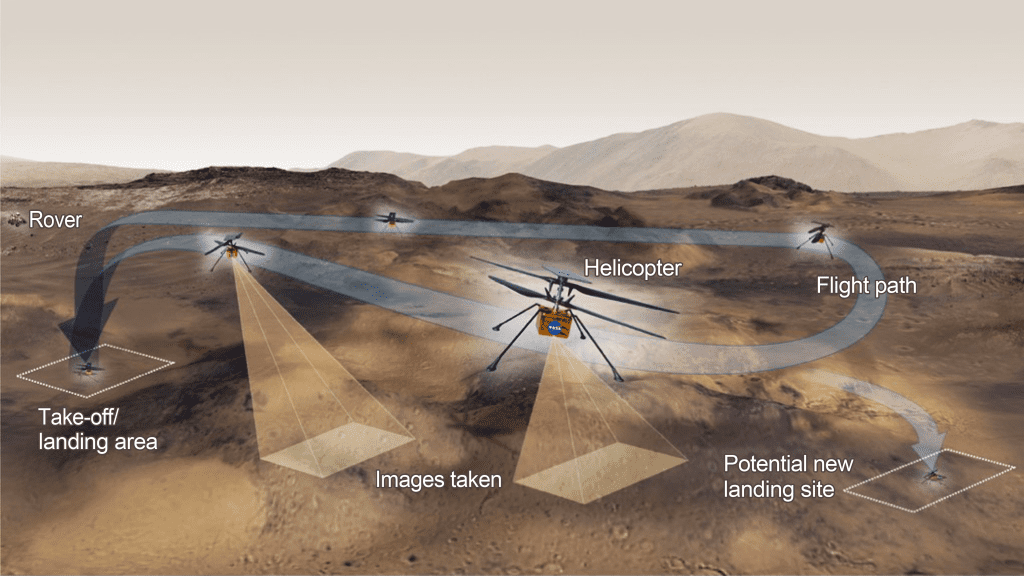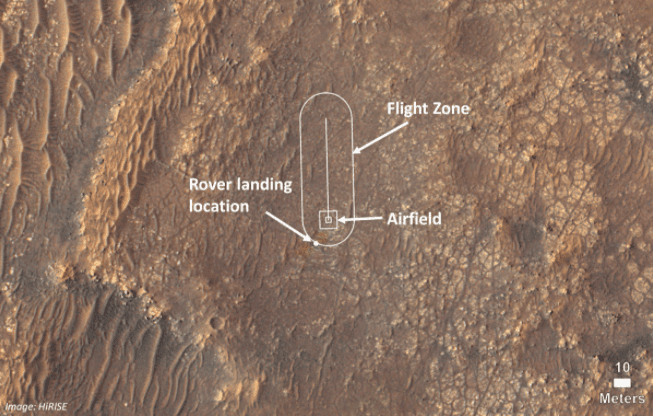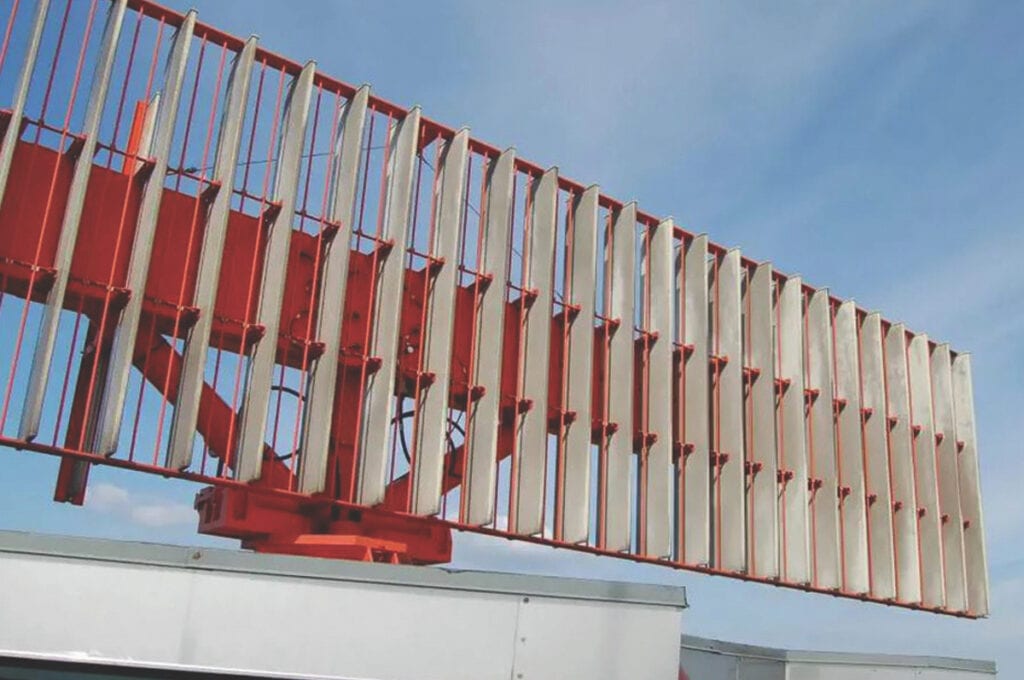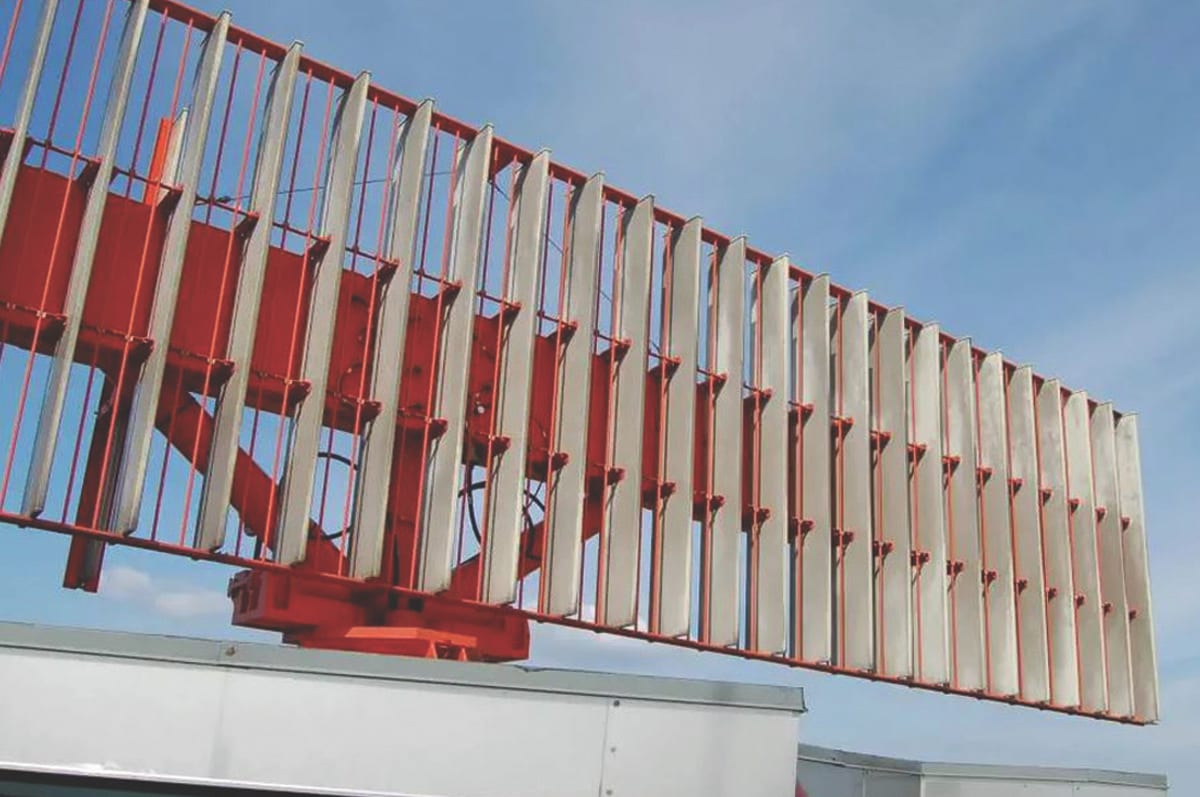
Check out the March 28 edition of What’s Trending in Aerospace, where editors and contributors for Avionics International bring you some of the latest headlines and updates happening across the global aerospace industry.
Embedded
AMETEK Signs $1.35 Billion Deal to Acquire Abaco Systems

Abaco Systems, a provider of mission-critical embedded computing systems, has been acquired by AMETEK in a deal valued at $1.35 billion.
“We are excited for the opportunity to acquire Abaco Systems,” David A. Zapico, AMETEK Chairman and Chief Executive Officer, said in a March 25 press release. “Their market leading embedded computing solutions are ideally positioned across a number of attractive aerospace and defense platforms, further broadening our differentiated product offering serving these markets.”
The deal will close in mid-2021 with Abaco joining AMETEK’s Electronic Instruments Group (EIG), according to the release.
Commercial
Finnair Signs Letter of Interest for Heart Aerospace ES-19 Electric Aircraft

Finnair signed a letter of interest for the Heart Aerospace ES-19 electric aircraft, currently under development in Stockholm, Sweden.
Finnair could acquire up to 20 of the new 19-seater Heart Aerospace ES-19 electric aircraft, for use on the airline’s short routes, the airline said in a March 25 press release. According to Heart Aerospace, the aircraft are expected to be available for first commercial flights in 2026.
“Finnair believes electric aviation will be one of the tools for the future of flying. It will help to promote responsible and sustainable aviation especially on short routes, in an era where climate change will increasingly dominate the agenda,” Anne Larilahti, Finnair Vice President of Sustainability, said in the release. “We want to be actively involved in developing and implementing new technologies which enable carbon-neutral flying.”
US Air Travel Hits Pre Pandemic High in March
On March 26, more than one million airline passengers went through TSA checkpoints for the 14th consecutive day, according to Transportation Security Administration (TSA) spokesperson Lisa Farbstein.
“JUST IN: @TSA continues to screen more than 1 million people a day at airport checkpoints. On Thursday, March 25th, 1,444,744 people were screened, continuing the string of more than a million per day since March 11th,” Farbstein tweeted on March 26.
On Sunday, March 21, TSA screened more than 1.5 million passengers, a number it has not topped since March 15, 2020.
The high number of air travelers has continued, despite ongoing recommendations by the U.S. Centers for Disease Control (CDC) and Prevention to avoid traveling. While the increase is a positive sign for airlines, it still amounts to only half of the air traffic from the boom levels experienced by the U.S. in 2019, according to a March 21 CNN article.
Air Traffic Management
Canadian Air Traffic Controllers Voice Concerns Over Safety Risk From Layoffs
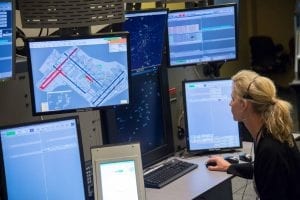
(CATCA)
As Canada’s Air Navigation Service Provider (ANSP) Nav Canada goes through a financial restructuring process due to revenue losses suffered under the COVID-19 global pandemic, a survey of the nation’s air traffic controllers outlines their concerns over the safety risk the layoffs could cause.
As part of an ongoing NAV Canada review, layoff notices have been issued to more than 100 air traffic controllers at several control centers including Edmonton, Montreal, Moncton and Gander, according to a March 25 press release published by the Canadian Air Traffic Controllers Association (CATCA).
More than 80 percent of Canadian Air Traffic Controllers say public safety will be put at risk if NAV Canada proceeds with intended layoffs and tower closures, according to a survey commissioned earlier this month which heard from 1,400 of Canada’s 1,800 licensed controllers.
All employees at the seven towers included in the study (St-Jean, Que., Windsor, Sault Ste. Marie, Regina, Fort McMurray, Prince George and Whitehorse) have received letters stating NAV Canada’s intention to permanently close their towers. This is in addition to 1,000 positions that were eliminated across the organization over the past year.
FAA Streamlines Commercial Space Launch and Re-Entry with New Part 450 Rule
The Federal Aviation Administration (FAA) announced a new Part 450 final rule for commercial space launch and re-entry regulations. The rule contains requirements for obtaining a vehicle operator license, safety requirements, and terms and conditions of a vehicle operator license.
“As we flip the switch on our new Part 450 streamline launch and reentry requirements rule, or what we call SLR2, this performance-based rule will allow us to keep pace with this innovative industry and safely oversee the dramatic growth of the entire commercial space transportation sector,” FAA Administrator Steve Dickson said in a video announcing the rule. “With SLR2, we can make sure launch vehicles and their amazing payloads aren’t tethered to the launch pad with red tape. That’s value-added for the industry and ultimately for the American people.”
Military
V-22 Osprey Reaches 600,000 Flight Hours

Photo from file
The V-22 Osprey tiltrotor aircraft built by Bell Textron and Boeing has reached 600,000 flight hours, according to a March 24 press release.
“Each V-22 flight hour is the product of a team effort,” Col. Matthew Kelly, V-22 Joint Program Office program manager, said in a statement. “Enabled by pilots, maintainers, testers, engineers, the program workforce and our industry partners who, together, ensure safe and effective V-22 operation.”
The U.S. Marine Corps, U.S. Air Force, U.S. Navy, and Japan Ground Self-Defense Force operate over 400 V-22 aircraft, according to the release.
“There is no other aircraft in the world capable of matching the unique capabilities of the Osprey,” Kurt Fuller, Bell V-22 vice president and Bell Boeing program director, said in a statement. “The 600,000 flight-hours represent countless tactical, logistical and humanitarian assistance missions, and the dedication of the men and women who maintain and operate the aircraft every day to keep it an advanced aircraft.”
US Navy Begins Program to Upgrade EA-18G Growler Jets
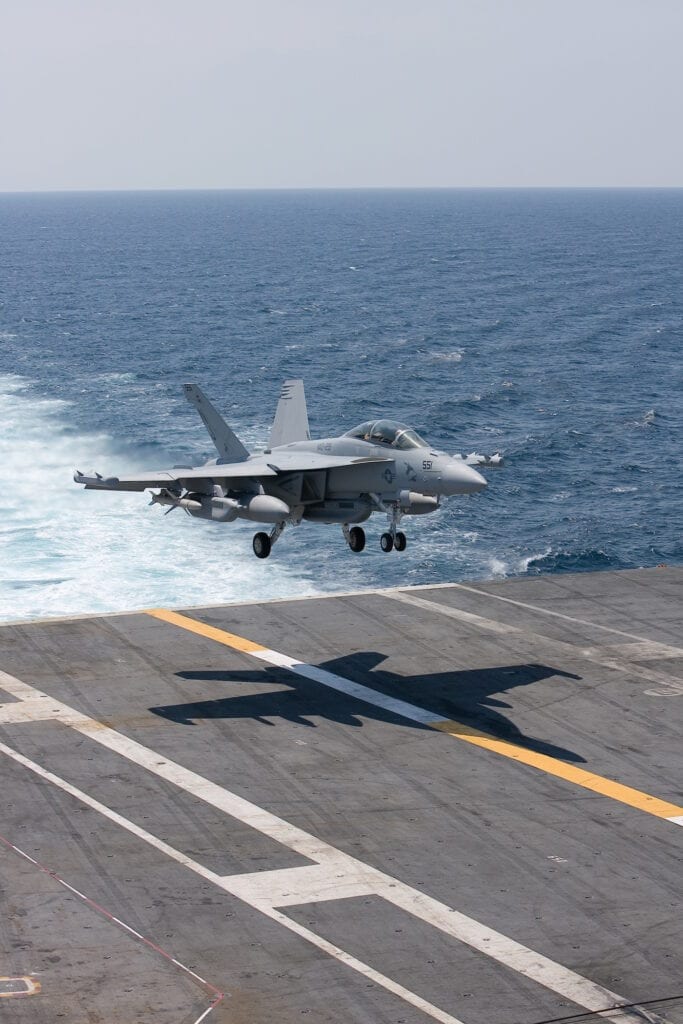
The U.S. Navy completed the first mission systems flight test of the Next Generation Jammer Mid-Band (NGJ-MB) on an EA-18G Growler last year. (Boeing)
The Navy started a five-year EA-18G Growler Capability Modification (GCM) program this month to upgrade capabilities on the Growler electronic warfare aircraft.
The service’s F/A-18 and EA-18G program Office (PMA-265) commenced the program at Naval Air Station (NAS) Whidbey Island, Wash., the Growler fleet homeport, the Navy said March 19. According to a Navy photo description, the first aircraft was inducted into the program on March 3.
The Growler is a variant of the F/A-18 that focuses on jamming radar and communications signals of opponents.
The Growler is set to receive several modifications to support the upcoming release of the Next Generation Jammer Mid-Band (NGJ-MB) pod, the AM/ALQ-249(V)1. The Navy said these modifications will focus on updating the aircrafts’ Airborne Electronic Attack (AEA) and mission systems, “enabling future capability growth for the U.S. Navy’s 160 EA-18Gs that serve a critical role in jamming radar and communications signals of threat forces, hindering their ability to detect and track U.S. and allied military forces.”
Bell Opens New Manufacturing Technology Center in Texas
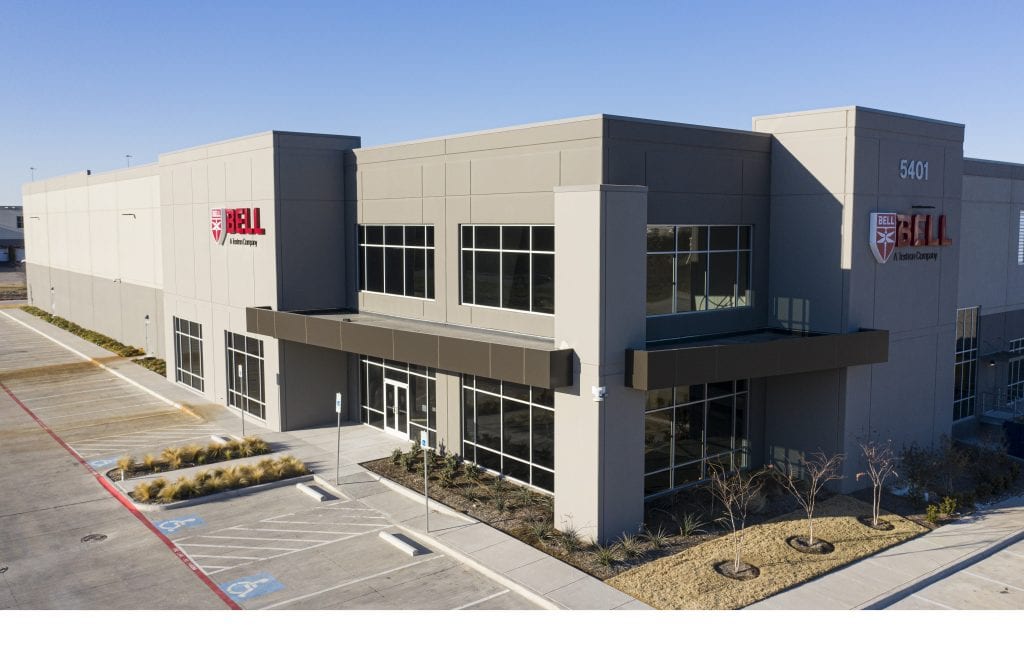
Bell expects its new Fort Worth, Texas Manufacturing Technology Center to become fully operational by the second half of 2021.
Bell Textron Inc., held a ribbon cutting ceremony for the start of operations at its new Manufacturing Technology Center (MTC). The event marked the next milestone in the center’s development before its opening targeted for summer 2021.
“Through the Manufacturing Technology Center, we can showcase how we will deliver the most affordable, capable and reliable aircraft for the warfighter,” Mitch Snyder, president and CEO, Bell, said in a March 26 press release. “As we work together to define the next generation of Bell products, it’s been gratifying to watch this new facility become a reality.”
Bell named the U.S. Army’s Future Vertical Lift program as one of the future aircraft that will be developed there.
Connectivity
Global Eagle Entertainment Completes Sale to Investor Group

Global Eagle Entertainment Inc. completed the sale of its assets to a group comprising the Company’s first-lien investors and its operations have emerged from the Chapter 11 restructuring process, according to a March 23 press release.
“Today marks the beginning of an exciting new chapter for Global Eagle,” Joshua Marks, Chief Executive Officer of Global Eagle said in the release. “Having successfully completed our sale and restructuring process, and now focused fully on mobility, the Company benefits from a stronger balance sheet, enhanced liquidity and blue-chip backing from new owners. We are well-positioned to invest in innovation, drive growth in our business, and continue supporting our customers as they adapt to evolving passenger and guest needs.”
Southwest Airlines is the largest user of Global Eagle’s in-flight connectivity service, which also counts Air France and Norwegian as aviation customers.
As previously announced, Global Eagle’s new owners include certain funds managed by affiliates of Apollo Global Management, Inc., Eaton Vance Management, Mudrick Capital Management, Crestline Investors, Inc., certain funds and accounts managed by Sound Point Capital Management, certain funds and accounts managed by Arbour Lane Capital Management, L.P., and certain funds and accounts under management by BlackRock Financial Management, Inc., among others.
SpaceX Launches 4th Starlink Batch of the Month

Starlink satellites before deployment on SpaceX’s March 24 Falcon 9 mission. (Screenshot via SpaceX.)
SpaceX continued its rapid launch cadence for Starlink missions, launching the fourth batch of satellites this month in an early morning launch on Wednesday. A Falcon 9 rocket carrying 60 Starlink satellites took off from Launch Complex 40 at Cape Canaveral Space Force Station at 4:28 a.m. on March 24.
Stage separation occurred about 2:30 into the mission. The first stage booster had a successful landing on a drone ship in the Atlantic Ocean. It was the sixth flight and recovery for this booster. The Starlink satellites were deployed about an hour and four minutes into the mission.
Starlink is a satellite constellation to deliver low-latency broadband internet service from space. The “Better Than Nothing Beta” testing kicked off in the United States in late October of 2020. At this point, Starlink is serving parts of the United States, United Kingdom, Western Germany, and the south island of New Zealand.
Business & GA
Piper Aircraft CEO Simon Caldecott Retires
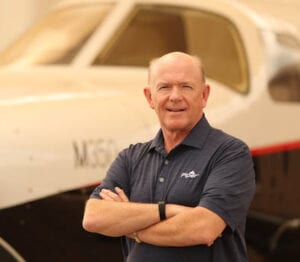
Simon Caldecott will retire as the CEO of Piper Aircraft next month.
In a March 22 press release, Piper Aircraft announced that Simon Caldecott will retire effective April 2, 2021 after nearly ten years as the company’s President and CEO and a 47-year career in the aviation industry.
Following Mr. Caldecott’s appointment as President and CEO in 2011, he set a new course for Piper Aircraft with a vision to stabilize, improve and grow the business with a specific intent to expand the M-Class product line and revitalize the trainer market. During his tenure, the company designed and introduced the newest M-class flagship product, the M600.
Simon’s leadership and guidance were instrumental in paving the way for the launch of Garmin’s Emergency Autoland technology, known as HALO on the new M600 SLS.
“It has been an honor and privilege leading Piper Aircraft through a transformative journey, from a legacy aircraft manufacturer to the first general aviation manufacturer to certify an autoland equipped general aviation aircraft”, Caldecott said. “We strengthened the leadership team with new talent, made major facility improvements to make a safer workplace and strengthened relations with the community as well as with major suppliers. I am enormously proud of the dedicated team at Piper and our global independent Dealership network. With everything in place, the Company’s future prospects are extremely encouraging and I look forward to a smooth transition.”
Pro Line Fusion Avionics Upgrade Approved for Cessna Citation CJ Jets
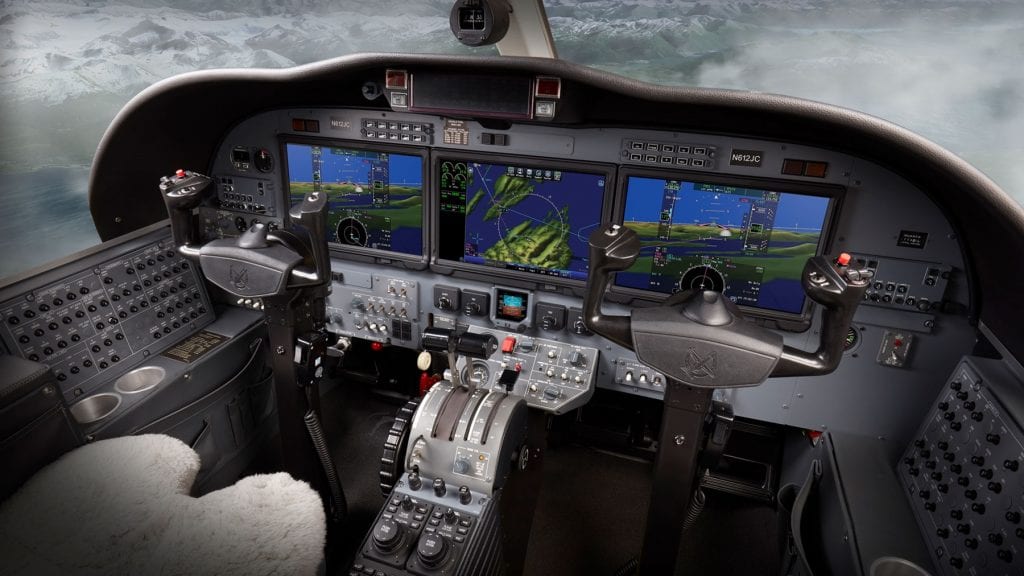
The Pro Line Fusion avionics upgrade for the Cessna CJ2+ has achieved FAA type certification. (Collins Aerospace)
Collins Aerospace, a unit of Raytheon Technologies Corp., announced in a March 23 press release that its Pro Line Fusion integrated avionics system for Cessna Citation CJ2+ light business jets has been certified by the Federal Aviation Administration (FAA). Certification of the system on the is “soon to follow,” according to the release.
An initial Supplemental Type Certificate (STC) was launched for Cessna Citation CJ3 aircraft in 2017. This follow-on STC adds the Citation CJ1+ and Citation CJ2+ aircraft while extending new functionality to the Citation CJ3. Other new capabilities include integrated V-speeds, fuel sensing and predictive performance, along with Controller Pilot Data Link Communications (CPDLC) capabilities that position the operator for more efficient arrivals and departures.
Specifically, the Pro Line Fusion upgrade includes:
- The ability to operate in modernizing global airspace with localizer performance, including vertical guidance (LPV) approaches, radius-to-fix (RF) legs, as well as SBAS capable GNSSBest-Equipped, Best-Served (BEBS) future enhancements
- Global Performance Based Navigation (PBN), FANS-1/A and CPDLC capabilities
- Standard industry-leading high-resolution synthetic vision, including Collins Aerospace’s patented airport dome feature, and extended runway centerlines
- Three touchscreen 14.1-inch widescreen LCDs with advanced graphics, configurable windows and eyes-forward, touchscreen navigation
- Touch-interactive maps with high-resolution topography, weather and obstacles plus geo-referenced electronic charts displaying own-aircraft position
Transport Canada Civil Aviation (TCCA) and European Union Aviation Safety Agency (EASA) certifications are targeted by the end of the year.
Gulfstream Marks 100th Delivery of G500 and G600 Aircraft

(Gulfstream Aerospace)
Gulfstream Aerospace marked the 100th customer delivery of its next generation G500 and G600 jets in a March 25 press release.
“Gulfstream saw great demand for the all-new G500 and G600 right out of the gate,” Mark Burns, president, Gulfstream, said in the release. “Once they entered service, interest in these innovative aircraft soared even more as operators experienced the compelling combination of the Symmetry Flight Deck and outstanding cabin comfort. Reaching 100 deliveries at this stage in the program is remarkable and a clear reflection of the advantages the G500 and G600 give our customers.”
The G500 entered service in September 2018, with the G600 following in August 2019. To date, the G500 and G600 have achieved more than 60 speed records and a combined total of more than 25,000 hours and more than 13,000 landings.
Unmanned
ZPX-B Now the Smallest Certified Micro-IFF Transponder for UAS
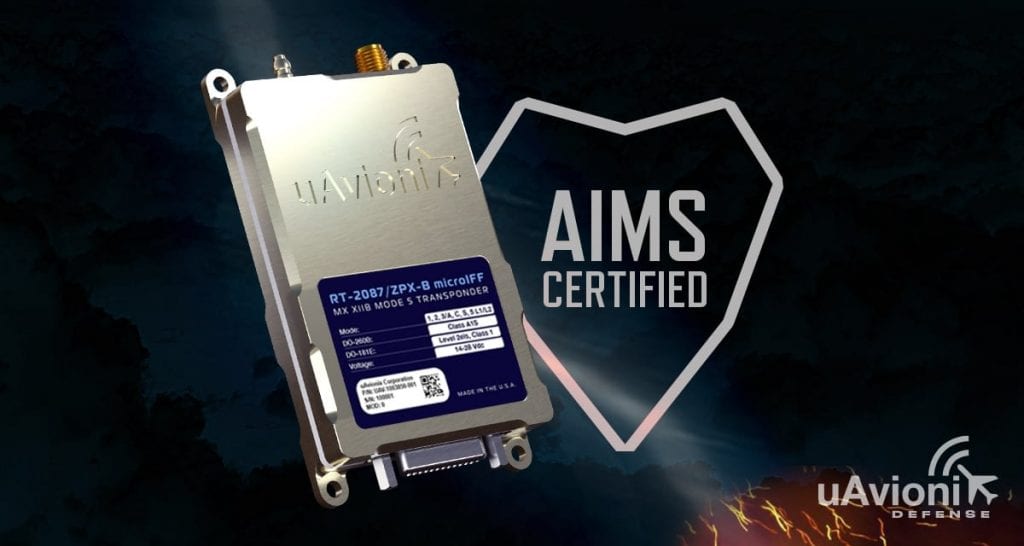
The RT-2087/ZPX-B identification friend or foe (IFF) transponder for unmanned aircraft systems (UAS) made by uAvionix Corporation is now certified by the Department of Defense (DoD) Air Traffic Control Radar Beacon System Identification Friend or Roe Program Office (AIMS PO).
The RT-2087/ZPX-B identification friend or foe (IFF) transponder for unmanned aircraft systems (UAS) made by uAvionix Corporation is now certified by the Department of Defense (DoD) Air Traffic Control Radar Beacon System Identification Friend or Roe Program Office (AIMS PO), according to a March 24 press release from the company.
The ZPX-B reduces size, weight, and power consumption coming in at 3.3 in3, 60 grams, and 3.5 watts, according to the release. It can be used for Group 1-4 UAS and has ADS-B and detect and avoid capabilities as well.
“It is one thing to produce a 53 gram Mode V microtransponder; it is quite another to actually get it certified,” Maj Gen, USAF (ret) James Poss, founder of ASSURE – the FAA’s Drone Research Center of Excellence, said in a statement. “This is a big step forward in reducing battlefield fratricide for all those small drones the DoD – and their Allies – are producing.”
Air Taxi
Former FAA Acting Administrator Dan Elwell Joins Joby Aviation Advisory Board
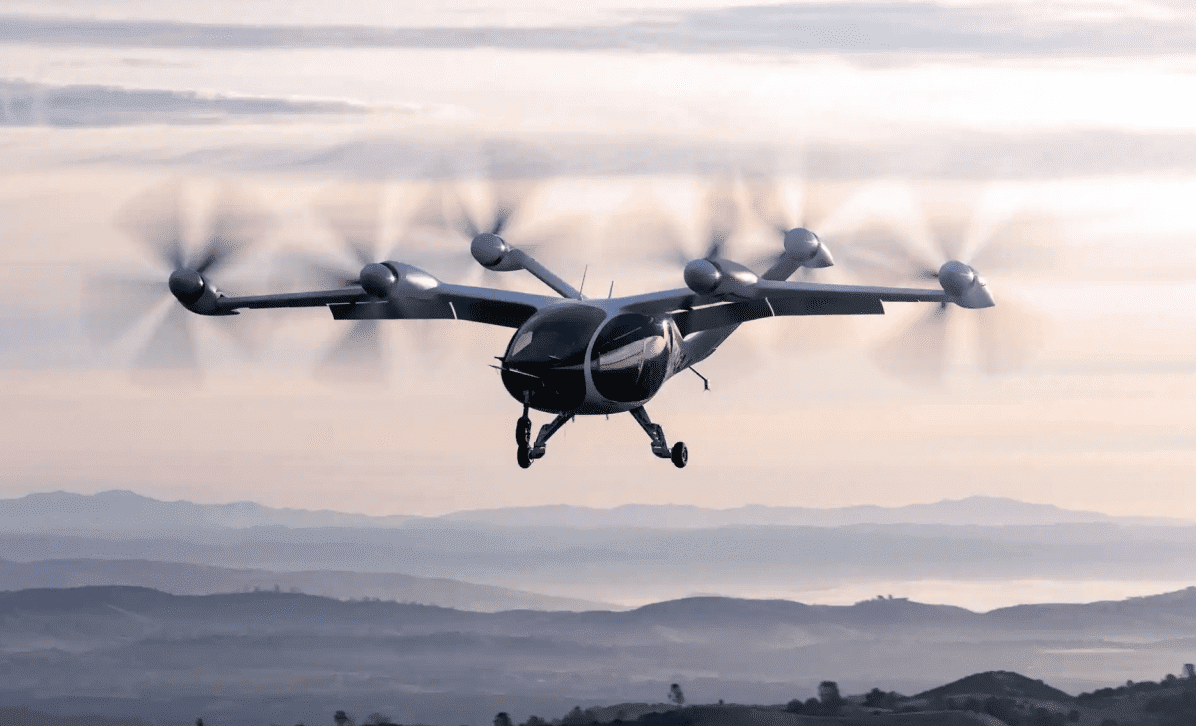
(Joby Aviation)
Dan Elwell, who served as deputy and acting administrator of the Federal Aviation Administration between June 2017 and November 2020, has been appointed to the advisory board of Joby Aviation.
“We are incredibly excited to welcome Dan to our Advisory Board at this exciting time for Joby Aviation,” JoeBen Bevirt, Founder and CEO of Joby Aviation said in a March 22 press release. “Dan brings a rare combination of in-the-air, public policy and corporate expertise, gained over decades of working in both the government and private sector. His unique perspective, and the insight he can offer around aircraft certification and airline operations, will be invaluable to Joby as we move towards introducing our service in 2024.”
Elwell joins the Advisory Board as Joby prepares to merge with Reinvent Technology Partners (“Reinvent” or “RTP”), a special purpose acquisition company (SPAC). Upon the closing of the transaction, the combined company will be named Joby Aviation, and become publicly traded, with its common stock expected to be listed on the New York Stock Exchange.
“JoeBen’s vision of saving a billion people an hour a day is going to change how we look at air travel. I’m excited to join such a dedicated and passionate team of aviators.
Large Scale UAM Demonstrations Coming to France with TindAIR
The Tactical INstrumental Deconflict And in flight Resolution (TindAIR) will conduct urban air mobility (UAM) exercises in the suburban and urban areas of Toulouse and Bordeaux, France, according to a March 25 press release.
The demonstrations will be large scale and focus on strategic deconfliction, according to the release. The new project was launched under the SESAR Joint Undertaking.
TindAIR will demonstrate that UAM operations in urban areas are possible as well as researching safe ways to integrate these new technologies.
The post What’s Trending in Aerospace – March 28, 2021 appeared first on Aviation Today.
Check FastApn access for commercial satcoms at Fastapn
Flytlink – Avionics, Satcom’s and IFE Consultants
